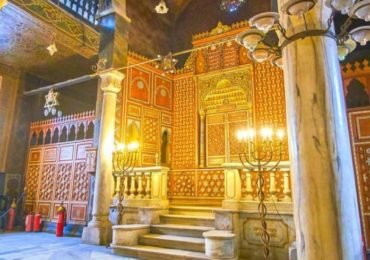The documents/texts of the Jewish Genizah are among the most important Egyptian Jewish heritage that has received little attention until now. It has the potential to be a one-of-a-kind Egyptian tourist product that should be widely promoted. The Genizah also gives us a good idea of the religious freedom that Jews had in Egypt.
Meaning of Genizah
Genizah is a Hebrew word that means “hidden, buried, or kept.” In Arabic, it means to conceal something. It is a term that refers to documents and papers belonging to Egyptian Jews during the Middle Ages. It can also refer to the location where the document was discovered, such as a synagogue or a Jewish cemetery. In modern times, it refers to the papers and documents discovered at Cairo’s Ben Ezra Synagogue in 1879 by Solomon Schechter.

If Genizah is a verb in Arabic, it means that someone died. As a result, these documents will be carried to the cemetery and buried as a human body. These are Jewish papers written in Hebrew or Arabic, as well as documents written in old Hebrew and Aramaic.
Genizah, in general, is a term used to describe Jewish papers that, according to Jewish law, cannot be burned or ignored because the name of God is written on them. The term was then, much broader and encompassed a wide range of things. The Genizah papers were kept in a special room at the synagogues called the Genizah Room.
Types of Genizah
This type of Genizah was known as the Temporary Genizah, and it was similar to the Genizah of Ben Ezra Synagogue, the Genizah of the Egyptians’ Synagogue in the Jews Lane, and the Genizah of Moshi Synagogue in Abbasia. When the Genizah Room is full, the contents will be removed in a funeral ceremony and buried in a Jewish cemetery, where they will decay as a human body. The eternal Genizah is the name given to this type of Genizah.
The Jewish cemetery in Basatein, the Jewish cemetery in Helwan, and the Jewish cemetery in Shatby, Alexandria all have examples of the eternal Genizah. The Genizah papers, texts, and documents are numerous. Many of them were robbed and taken to other countries.
Subjects of Genizah
The subjects of the Genizah are classified into two categories: literature and documentation. These documents are regarded as a very accurate reflection of the time in which they were written, as well as an authentic source for writing history. The Genizah is also a vital source for studying social, cultural, and economic history. As a result, Genizah documents are as important as the papyrus sheets discovered from ancient Egypt in terms of providing knowledge about these periods. The Genizah contains a wealth of information not only about the Jews of Egypt during the Islamic period but also about the Egyptian people as a whole, as well as the relationship of the Jews with Muslims and Christians in Egypt.
The majority of Genizah documents in Egypt were written at the Genizah, particularly contracts that came from all Egyptian cities, including Fustat, Alexandria, Rosetta, Damietta, Fayoum, Upper Egypt, and all Delta cities.

